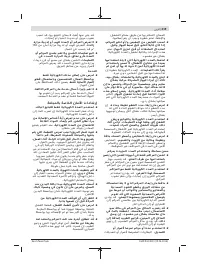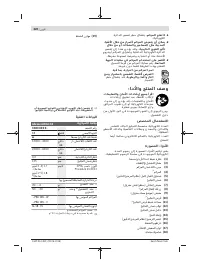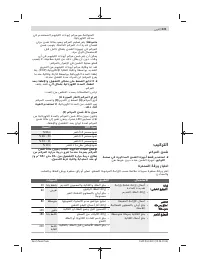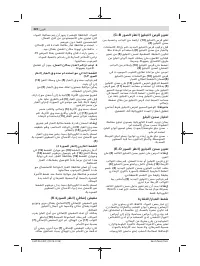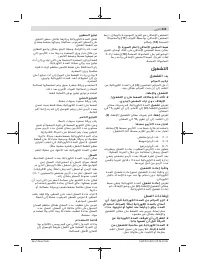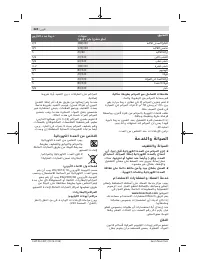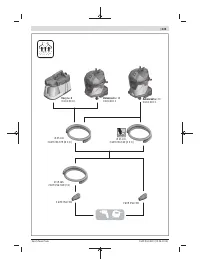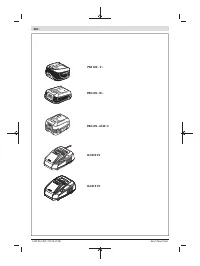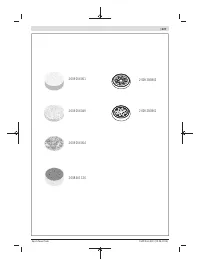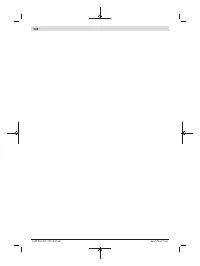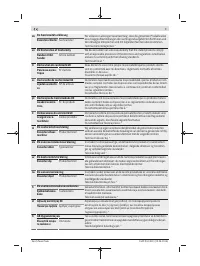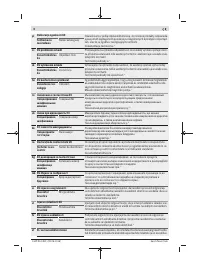Шлифмашины Bosch AdvancedOrbit 18 - инструкция пользователя по применению, эксплуатации и установке на русском языке. Мы надеемся, она поможет вам решить возникшие у вас вопросы при эксплуатации техники.
Если остались вопросы, задайте их в комментариях после инструкции.
"Загружаем инструкцию", означает, что нужно подождать пока файл загрузится и можно будет его читать онлайн. Некоторые инструкции очень большие и время их появления зависит от вашей скорости интернета.
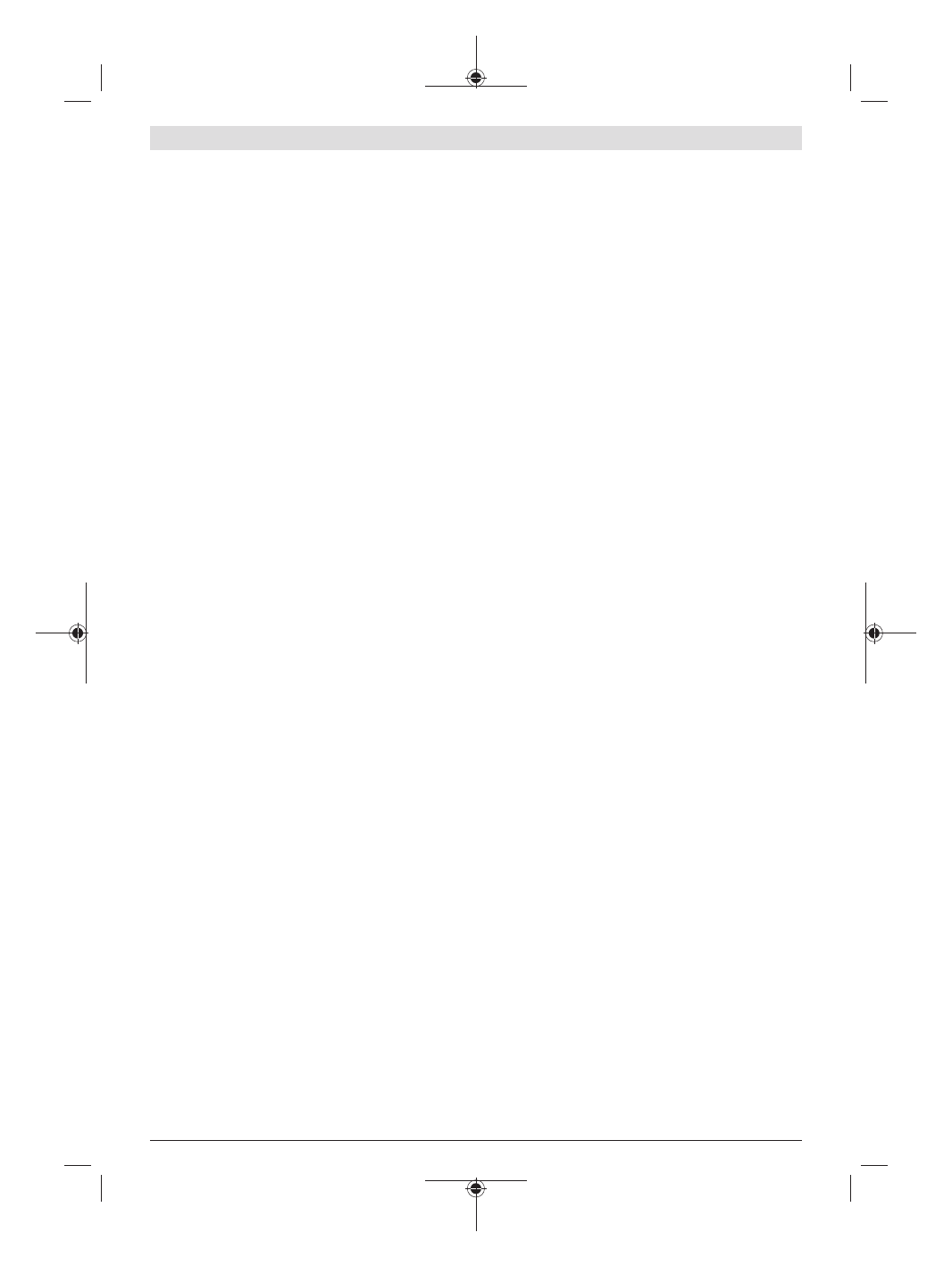
18
| English
1 609 92A 4BC | (09.08.2018)
Bosch Power Tools
Operation
Starting Operation
Inserting the Battery
Push the charged battery
(4)
into the power tool from be-
hind until the battery is securely locked.
Switching On/Off
u
Make sure that you are able to press the On/Off switch
without releasing the handle.
To
switch on
the power tool, slide the on/off switch
(2)
for-
ward so that
“1”
appears on the switch.
To
switch off
the power tool, slide the on/off switch
(2)
backward so that
“0”
appears on the switch.
Preselecting the orbital stroke rate
You can even preselect the orbital stroke rate during opera-
tion using the necessary orbital stroke rate preselection
thumbwheel
(1)
.
1–2
Low orbital stroke rate
3–4
Medium orbital stroke rate
5–6
High orbital stroke rate
The required orbital stroke rate is dependent on the material
and the work conditions and can be determined using prac-
tical tests.
After working at a low orbital stoke rate for an extended
period, you should operate the power tool at the maximum
orbital stroke rate for approximately three minutes without
load to cool it down.
Restart Protection
The restart protection feature prevents the power tool from
uncontrolled starting after the power supply to it has been
interrupted.
To
restart
the tool, set the on/off switch
(2)
to the off posi-
tion and then switch the power tool on again.
Working Advice
u
Remove the battery from the power tool before carry-
ing out work on the power tool (e.g. maintenance,
changing tool, etc.). The battery should also be re-
moved for transport and storage.
There is risk of injury
from unintentionally pressing the on/off switch.
u
Always wait until the power tool has come to a com-
plete stop before placing it down.
u
This power tool is not suitable for bench-mounted use.
It must not be clamped into a vice or fastened to a work-
bench, for example.
Sanding Surfaces
Switch the power tool on, place the entire sanding surface
against the surface of the workpiece and apply moderate
pressure as you move the sander over the workpiece.
The material removal rate and sanding result are primarily
determined by the choice of sanding sheet, the preselected
orbital stroke rate level and the contact pressure.
Only immaculate sanding sheets achieve good sanding per-
formance and make the power tool last longer.
Be sure to apply consistent contact pressure in order to in-
crease the lifetime of the sanding sheets.
Excessively increasing the contact pressure will not lead to
increased sanding performance, rather it will cause more
severe wear of the power tool and of the sanding sheet.
Do not use a sanding sheet for other materials after it has
been used to work on metal.
Use only original Bosch sanding accessories.
Rough Sanding
Attach a coarse grit sanding sheet.
Apply only light pressure to the power tool so that it runs at a
higher orbital stroke rate and a higher material removal rate
is achieved.
Fine Sanding
Attach a fine grit sanding sheet.
You can reduce the sanding plate orbital stroke rate by
lightly varying the contact pressure or changing the orbital
stroke rate level; the random orbit motion will be retained.
Move the power tool with moderate pressure flat on the
workpiece in a circular motion or alternately along and
across it. Do not tilt the power tool in order to avoid sanding
through the workpiece, e.g. veneers.
Switch the power tool off after completing operation.
Polishing
For polishing up weathered paint and redressing scratches
(e.g. acrylic glass), the power tool can be fitted with an ap-
propriate polishing tool, e.g. lambswool bonnet, polishing
felt or polishing sponge (accessory).
Select a low orbital stroke rate (level 1–4) when polishing in
order to avoid heating up the surface excessively.
Apply the polish to an area slightly smaller than the area
which you intend to polish. Using the appropriate polishing
tool, work in the polish with either linear or circular move-
ments and with moderate pressure.
Do not allow the polish to dry out on the surface; this may
damage the surface. Do not expose the surface which you in-
tend to polish to direct sunlight.
Clean the polishing tool regularly to ensure good polishing
results. Wash the polishing tools with mild detergent and
warm water; do not use thinning agents.
Application Table
The figures in the table below are recommended values.
The best method for determining the best combination while
sanding or polishing is practical experimentation.
Характеристики
Остались вопросы?Не нашли свой ответ в руководстве или возникли другие проблемы? Задайте свой вопрос в форме ниже с подробным описанием вашей ситуации, чтобы другие люди и специалисты смогли дать на него ответ. Если вы знаете как решить проблему другого человека, пожалуйста, подскажите ему :)



























































































































































































































